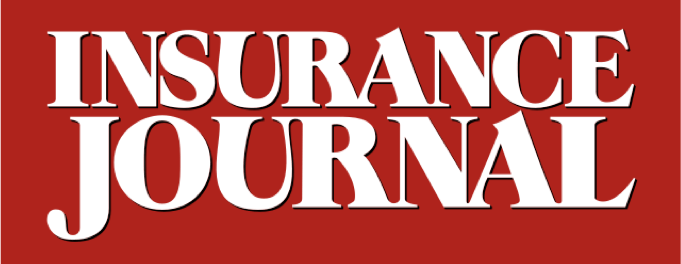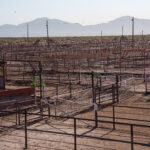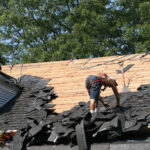State Farm has long positioned itself as the dependable “good neighbor” ready to help when disaster strikes. Through carefully crafted advertising, the company promotes a sense of comfort, security, and connection. Images of helpful agents arriving with a smile and offering quick support are central to the brand’s identity. But for many California policyholders grappling with the aftermath of the January 2025 wildfires, that promise is proving illusory.
The California Department of Insurance has opened a formal Market Conduct Examination into State Farm’s handling of wildfire claims. At the center are hundreds of consumer complaints citing delays, conflicting communications and a fragmented claims process. As California’s largest homeowner’s insurer, State Farm is under intense scrutiny.
The emerging picture is one of systemic disarray, not neighborly care. To be fair, running a major insurance company in a catastrophe-prone region is challenging. Executives must balance regulatory oversight, climate risks, policyholder expectations, and cost pressures. But those challenges do not excuse the current breakdown in claims handling. The failure isn’t just the result of disaster chaos, it stems from decisions made long before the fires began.
Among the most glaring issues is the use of multiple adjusters on a single claim. Policyholders report being passed between three or more catastrophe adjusters within a matter of weeks. Each handoff forces them to re-explain their losses, often under stress, without confidence that critical details were passed along. Without a single point of contact, the process feels impersonal and erratic, just when steady support is most needed.

Adding to the frustration is indecision at the core of the adjustment process. Many adjusters in the wildfire zones are not State Farm employees but contracted from independent firms. These adjusters reportedly lack decision-making authority and must wait for procedural direction from State Farm. This creates delays not only for the policyholders, but for the adjusters themselves. Instead of a well-oiled system, the process resembles a chain of command that is too brittle to function in real-time.
The CDI is also investigating inconsistent outcomes. Reports suggest that policyholders with similar losses are receiving very different settlements, with some being offered full replacement and others being told that repairs are enough. For a company known for its detailed “operations guides” and standardized procedures, this inconsistency is alarming. In a regulated industry built on fairness, such disparity erodes public confidence.
These flaws may trace back to cost-cutting decisions made years ago. Over a decade ago, State Farm closed its in-house catastrophe training center and shifted more responsibilities to independent adjustment firms. As experienced claims managers left, much institutional knowledge left with them. While this may have reduced short-term costs, the long-term effects are now visible: catastrophe response that’s fragmented and reliant on third parties whose priorities may not align with policyholder care. Reports suggest some firms do not adequately train their adjusters, a critical shortfall given the complexity and emotional toll of wildfire total loss and toxic smoke claims.
This isn’t the first time State Farm has faltered under a large-scale catastrophe. After Hurricane Katrina, the company faced over 70,000 claims and eventually paid $100 million in restitution following allegations of mishandled flood damage. Crises expose brittle systems. And the consequences often fall hardest on customers who believed in the promise of seamless support.
What makes this particularly painful is the gap between expectation and experience. Like many large insurers, State Farm invests heavily in emotional marketing, featuring images that convey reassurance and trust. But the claims process, especially in catastrophe scenarios, can be technical, bureaucratic, and opaque. The promise is compassion and clarity. The product, at times, is confused and delayed.
Most consumers aren’t claims experts. They don’t read policies like attorneys. They rely on the message that when things go wrong, State Farm will respond with clarity and care. That is difficult to deliver without a sufficient number of highly skilled, experienced, and empowered claims professionals. When the reality falls short, complaints flood the CDI.
Ultimately, responsibility lies with State Farm’s leadership. The service policyholders receive today reflects long-term choices about staffing, training, and vendor reliance. If chaos has replaced care, that is not an accident. It’s a foreseeable outcome of a system optimized for cost efficiency in a world demanding operational resilience. The test now is whether State Farm can reconcile its brand promise with operational reality.
Merlin is founder and president of Merlin Law Group. Merlin has dedicated his practice to the representation and advocacy of insurance policyholders in disputes with insurance companies nationwide. He is on the United Policyholders board, and has been a guest commentator on CNN and Fox News.
Topics Catastrophe Natural Disasters Wildfire Claims State Farm
Was this article valuable?
Here are more articles you may enjoy.


 More US Beef Plants May Close as Cattle Herds Keep Tightening
More US Beef Plants May Close as Cattle Herds Keep Tightening  Insurance Industry ‘Megadeals’ Dominate 2025, Says PwC
Insurance Industry ‘Megadeals’ Dominate 2025, Says PwC  ‘Door Knocker’ Roofers Were Everywhere. NC Farm Bureau Saw an Opportunity
‘Door Knocker’ Roofers Were Everywhere. NC Farm Bureau Saw an Opportunity  UPS Ripped Off Seasonal Workers With Unfair Pay Practices, Lawsuit Alleges
UPS Ripped Off Seasonal Workers With Unfair Pay Practices, Lawsuit Alleges 

